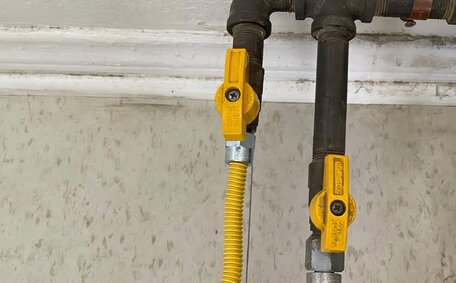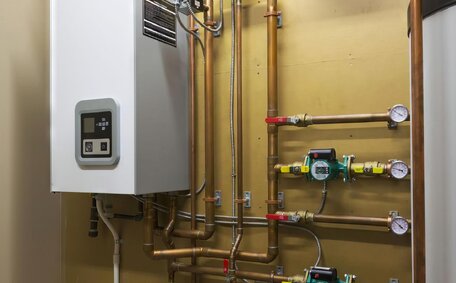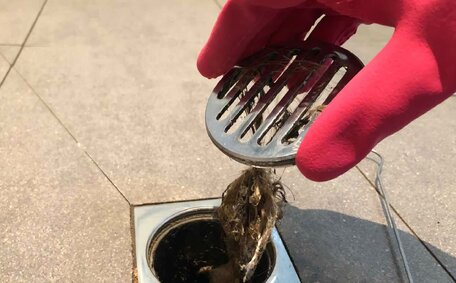Understanding Hot Water Heater Temperature Settings
The temperature setting of your water heater is vital for household safety and efficiency. The recommended setting for most homes is about 49 degrees Celsius, to balance safety and energy savings, although certain situations may require different levels of heat.
A properly adjusted water heater operates efficiently, delivering the correct water temperature while lowering the chances of scalding and saving on energy costs.
If a water heater is set too high, it poses a burn risk, particularly for young children and older adults. On the other hand, a low setting may not provide hot enough water for effective cleaning and could promote bacterial growth.
In the following sections, we’ll explore how adjust the temperature settings for various types of water heaters, including gas water heaters and electric models. Comprehending how to manage the internal temperature settings, whether for gas, electric, or tankless models, is key to safe and efficient water heater operation.
Locating Your Water Heater’s Thermostat
Identifying the thermostat on your water heater for proper water temperature regulation begins with recognising if you own a gas, electric, or tankless model. For gas electric water heaters, there is typically a dial or knob for hot water control located near the base of the unit. Ensure your electric water heater’s power is safely managed by consulting the owner’s manual for specific instructions.
Electric hot water heaters typically include an upper and lower thermostat for precise temperature electric hot water control. Again, refer to your specific model’s manual. For tankless systems, often known as continuous flow systems, the digital panel is your central hub for adjusting the heater’s temperature.
Removing the external access panel will expose the insulation, behind which you can find each thermostat.
Regardless of your hot water system type, finding the thermostat is crucial to adjust temperature hot water settings. Do not attempt to alter the temperature of your water heater without properly identifying the thermostat control based on your unit. Improper modifications can cause inefficiency or hazardous conditions.
Adjusting Electric Water Heater Temperature
To adjust an electric hot water heater’s temperature, ensure it is powered off at the circuit breaker to disconnect all power. First, turn off the unit and remove the access panel to expose the insulation behind it.
Carefully handle the insulation to avoid fibreglass particles - using gloves, eye protection, and a dust mask is advised.
Locate the upper and lower thermostats, which control the heating elements that regulate water temperature. Adjust both thermostats with a screwdriver to the preferred temperature, typically 50 degrees Celsius. Some situations may call for a higher setting, up to 60 degrees Celsius.
Replace the insulation, access panel, and power exactly as removed. Upon reactivation of the heating elements, the updated temperature should reach all taps within a few hours. Keep an eye on your hot water over the coming days, adjusting the temperature as required for your ideal water warmth.
Adjusting Gas Water Heater Temperature
To adjust a gas water heater temperature, find the control dial or knob at the tank’s base. Before making changes, let the heater cool completely to avoid the risk of burns.
Exercise caution when relighting the pilot light.
Refer to the owner’s manual for proper ignition procedures based on your model. Typical gas heaters have pilot lights that must be manually re-lit following thermostat modifications. After adjusting the temperature, let some water run to verify the heater functions correctly before departing from the area.
Gently rotate the dial clockwise to turn up the hot water temperature or counter-clockwise to decrease it. Determining by how much to adjust your water heater temperature often involves changes of more than 5 to 10 degrees Fahrenheit. Test water temperatures at nearby faucets after a few hours.
Continue monitoring and adjusting over subsequent days until satisfied that your gas water heater thermostat matches the output temperature you desire for your home. Seasonal variations may require minor thermostat adjustments to maintain your desired water temperature.
Adjusting Tankless Water Heater Temperature
Adjusting the temperature on a tankless water heater is very simple thanks to the digital control panel. Locate the panel on your unit and look for the buttons or touchscreen controls to increase or decrease the temperature setting.
Continuous flow tankless heaters allow for immediate and precise temperature adjustments. This affords efficient calibration of the hot water temperature, typically set at a safe 49 degrees Celsius.
Digital controls offer the flexibility to fine-tune your hot water temperature, optimising for comfort and energy use. As you raise and lower temperatures, estimates of energy consumption may display on the panel. This helps encourage responsible settings to conserve resources.
Tankless heaters provide great precision and responsiveness when adjusting output water temperature. Just tap the digital controls to tune your hot water up or down to the perfect level for protecting safety while satisfying household needs.
Recommended Household Water Temperature Settings
Water heaters often come preset at about 60 degrees Celsius, but it’s best to reduce this to 49 degrees Celsius for home use. This lower temperature setting helps reduce risk scalding while still allowing water to reach adequate temperatures for sanitation purposes.
Failing to set the correct temperature on your heater may result in dangerously hot water that can cause severe burns quickly. Young children and seniors are at greatest risk. Brief contact with overly hot water can require significant medical attention, presenting a risk to family safety.
Setting your hot water system to 120°F ensures a safer temperature for using hot water in your day-to-day activities. Reducing the temperature from 140°F still provides adequately hot water for most uses, while increasing safety.
You may opt for temperatures higher than the standard if using a dishwasher or washing machine that necessitates hotter water for sanitation. However, installing thermostatic mixing valves can let you keep the main system set to 120°F while still accommodating isolated needs for higher temperatures.
Improving Efficiency Through Insulation and Maintenance
Following energy-saving advice, such as adequate insulation and periodic maintenance, helps maintain your hot water system’s efficiency and temperature settings. This not only increases energy efficiency but could also lead to energy saving in your household’s utility bills and repairs in the long run.
Insulation of exposed hot water pipes reduces heat loss, enhancing efficiency. Strategic insulation of your water pipes can save your household 20-30% annually on water heating expenses. Ensure all hot water pipes, especially those in crawl spaces and attics, have proper insulation.
Annually check the insulating blanket or foam inside your tank to maintain efficiency. Replace if damp or degraded as wet insulation loses R-value effectiveness. This ensures effective temperature regulation and optimal efficiency.
Regularly drain and flush your heater every 6-12 months to prevent sediment buildup, which can cause overheating and check that the relief valve is working properly. Inspecting anodes and refitting loose fittings also helps avoid leaks and temperature fluctuations.
Thorough insulation and regular maintenance ensure consistent water temperatures, cost savings, and help prevent premature unit failure.
Installing Thermostatic Mixing Valves for Safety
Thermostatic mixing valves are an important safety component that help prevent accidental scalding by regulating water temperature. They mix hot water from the heater with cold water to deliver water at a safe temperature to fixtures.
A thermostatic mixing valve enables setting the heater to a higher temperature for appliances such as dishwashers or washing machines requiring hotter water. The valve can adjust by automatically mixing in cold water to reduce the temperature to a safe 120°F at points of use like sinks and showers.
Follow these steps to install a mixing valve:
- Choose a location close to the water heater like under a sink or behind the washing machine.
- Shut off cold and hot water valves and drain pipes.
- Cut into the hot and cold water lines and install a T-fitting on each.
- Connect the mixing valve’s inlet and outlet ports with short pipe sections.
- Firmly fix the mixing valve in place.
- Reestablish hot water flow and let the valve mix until the target temperature is achieved.
- Check the water temperature at taps to confirm a safe 49 degrees Celsius.
Properly installed thermostatic mixing valves let you maintain water heaters at higher temperature settings needed for specific applications while adjusting temperature water to prevent scalds and burns.






